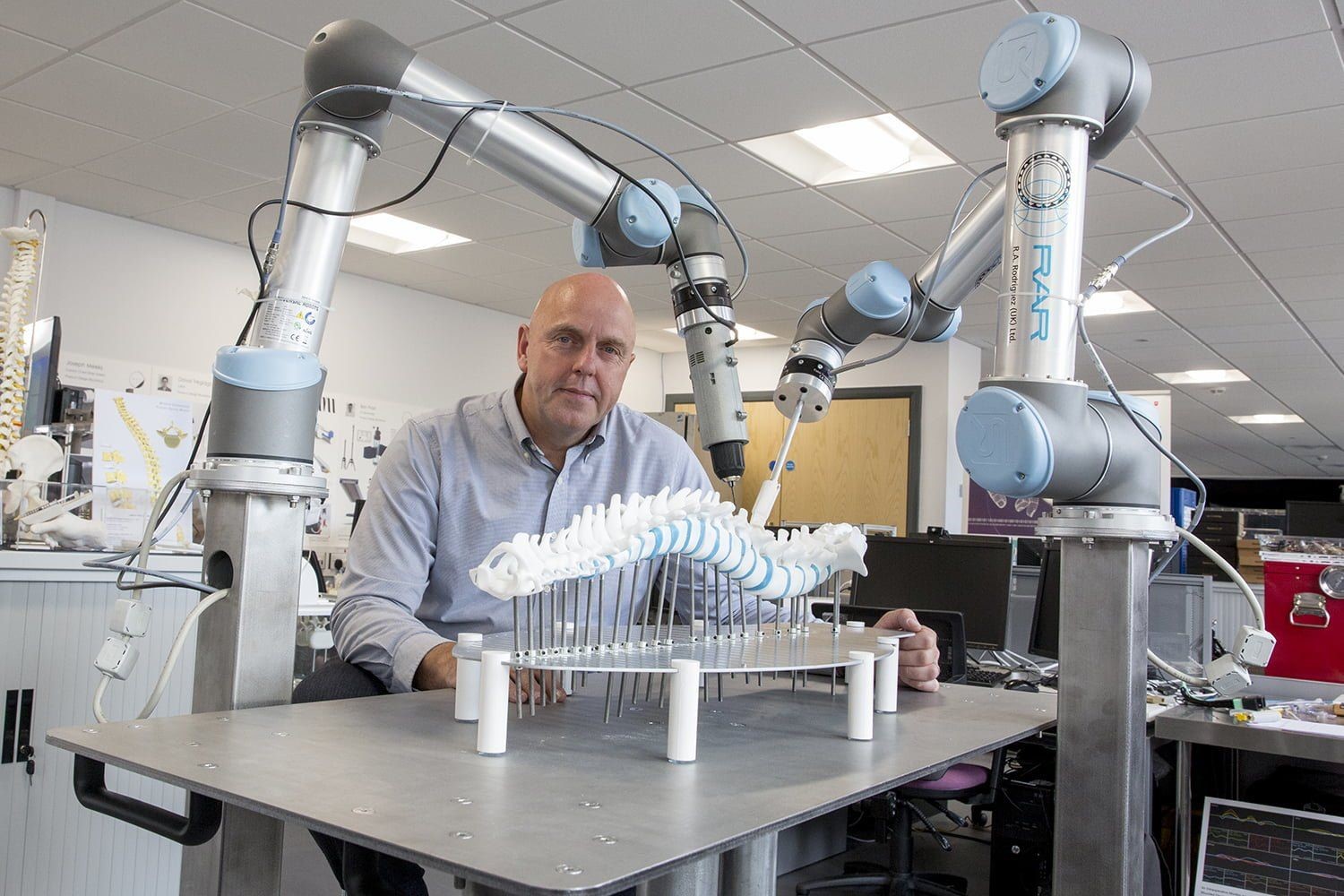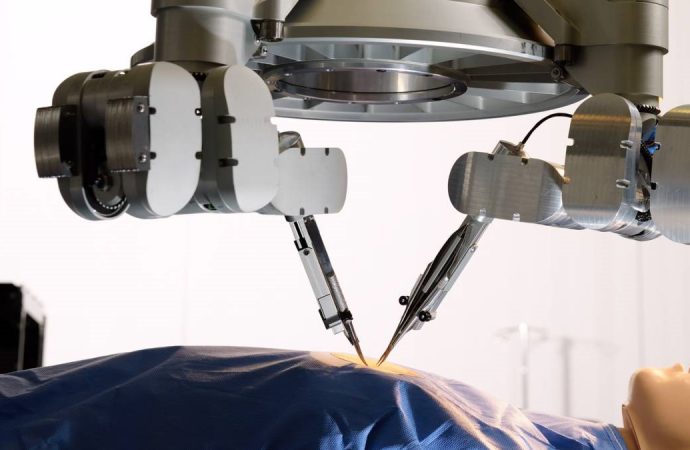In recent years, the field of robotics has made significant strides, profoundly impacting various sectors, including healthcare. One of the most transformative applications of this technology is in the realm of surgery. Robotics surgery improvements are not just enhancing the precision and efficiency of surgical procedures but are also redefining the very nature of patient
In recent years, the field of robotics has made significant strides, profoundly impacting various sectors, including healthcare. One of the most transformative applications of this technology is in the realm of surgery. Robotics surgery improvements are not just enhancing the precision and efficiency of surgical procedures but are also redefining the very nature of patient care. This article delves into the myriad ways in which advances in robotics are revolutionizing surgical practices, offering a glimpse into the future of medical science.
The Evolution of Robotics in Surgery
The concept of using robots in surgery is not entirely new. The first significant milestone was the introduction of the da Vinci Surgical System in the early 2000s. This system allowed surgeons to perform minimally invasive surgeries with unparalleled precision. However, the technology has evolved exponentially since then, incorporating cutting-edge advancements in artificial intelligence, machine learning, and real-time data analytics.
Enhanced Precision and Control
One of the most notable robotics surgery improvements is the enhanced precision and control that these systems offer. Traditional surgery often involves a degree of human error, no matter how skilled the surgeon. Robotics can mitigate this risk by providing high-definition 3D visualization and robotic arms that can execute movements with micron-level accuracy. This level of precision is particularly beneficial in complex procedures such as neurosurgery and cardiovascular surgery, where even the slightest error can have significant consequences.
Minimally Invasive Procedures
Another significant advantage of robotics in surgery is the ability to perform minimally invasive procedures. Traditional open surgeries often require large incisions, leading to extended recovery times and increased risk of complications. Robotics surgery improvements have made it possible to perform complex procedures through small incisions, reducing trauma to the body. This minimally invasive approach results in shorter hospital stays, quicker recovery times, and less post-operative pain for patients.
Real-Time Data and Analytics
Advances in robotics are also leveraging the power of real-time data and analytics to improve surgical outcomes. Modern robotic systems are equipped with sensors and cameras that provide real-time feedback to surgeons. This data can be analyzed instantaneously to make adjustments during the surgery, ensuring optimal outcomes. For instance, in orthopedic surgeries, real-time data can help in the precise placement of implants, significantly improving the long-term success of the procedure.
Training and Simulation
The integration of robotics in surgery is not limited to the operating room; it is also transforming how surgeons are trained. Advanced simulation platforms allow surgeons to practice complex procedures in a risk-free environment. These simulations are incredibly realistic, providing tactile feedback and real-time data to mimic actual surgical conditions. This level of training ensures that surgeons are well-prepared and confident when performing real surgeries, thereby improving patient outcomes.
Reduced Fatigue and Improved Ergonomics
Surgeon fatigue is a critical issue that can impact the quality of surgical care. Traditional surgeries often require surgeons to stand for extended periods, leading to physical strain and fatigue. Robotics surgery improvements address this issue by allowing surgeons to operate from a seated position using ergonomic consoles. This setup reduces physical strain and allows surgeons to focus entirely on the procedure, thereby enhancing the quality of care.

Picture by: Yandex.com
Case Studies and Real-World Applications
Cardiovascular Surgery
Cardiovascular surgeries are among the most complex and high-risk procedures in medicine. Robotics surgery improvements have made it possible to perform these surgeries with greater precision and fewer complications. Robotic systems can navigate through the intricate network of blood vessels with ease, reducing the risk of damage to surrounding tissues. This precision is particularly beneficial in procedures such as coronary artery bypass grafting (CABG) and valve replacements.
Neurosurgery
Neurosurgery is another field that has greatly benefited from advances in robotics. The brain is an incredibly complex organ, and even minor errors can have devastating consequences. Robotics surgery improvements have made it possible to perform delicate brain surgeries with unprecedented accuracy. For instance, robotic systems can be used to remove brain tumors with minimal impact on surrounding healthy tissue, significantly improving patient outcomes.
Orthopedic Surgery
In orthopedic surgery, the placement of implants is crucial for the long-term success of the procedure. Robotics surgery improvements have made it possible to achieve near-perfect alignment of implants, reducing the risk of complications such as implant loosening or misalignment. Robotic systems can also assist in complex procedures such as spinal surgeries, where precision is paramount.
The Future of Robotics in Surgery
The future of robotics in surgery looks incredibly promising, with ongoing research and development aimed at further enhancing the capabilities of these systems. One area of focus is the integration of artificial intelligence and machine learning algorithms to make robotic systems even more intuitive and adaptive. These advancements could enable robotic systems to learn from each surgery, continuously improving their performance.
Another exciting development is the concept of remote surgery, where a surgeon can perform a procedure on a patient located thousands of miles away using a robotic system. While this concept is still in its infancy, it has the potential to revolutionize healthcare by making specialized surgical care accessible to patients in remote or underserved areas.
Challenges and Considerations
While the benefits of robotics surgery improvements are undeniable, there are also challenges that need to be addressed. One of the primary concerns is the high cost of robotic systems, which can be a barrier for many healthcare institutions. Additionally, there is a learning curve associated with using these advanced systems, requiring extensive training and practice.
There are also ethical considerations, particularly concerning the extent to which robots should be involved in surgical decision-making. While robotic systems can provide valuable assistance, the ultimate responsibility for the surgery should always lie with the human surgeon.
Conclusion
Advances in robotics are undeniably transforming the field of surgery, offering unprecedented precision, control, and efficiency. These robotics surgery improvements are not only enhancing the quality of surgical care but are also redefining the patient experience. As technology continues to evolve, the potential for further advancements in this field is limitless. However, it is crucial to address the associated challenges and ethical considerations to ensure that the benefits of robotics in surgery are accessible to all. The future of surgery is undoubtedly robotic, and it holds immense promise for improving patient outcomes and revolutionizing healthcare as we know it.
















